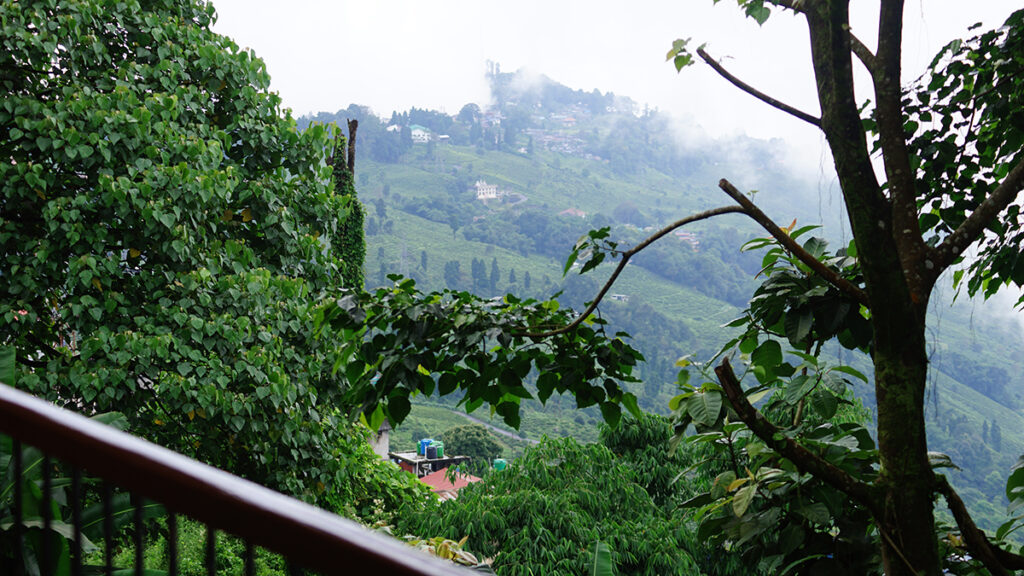
Adventure is not always a things to do, as proclaimed by the world – A trek to Everest, bungee jumping from crazy heights, or undertaking a course from the premier mountaineering institutions. I think adventure today has become limited to a commodity to be consumed & only then would you be called adventurous. On this trip, we explored adventure in the simple joys of mountains – the first being travelling in the monsoons.
The eastern belt of Himalayas is celebrated as a dangerous one for monsoon travel, hence the months of June & July are called “off season”. I have recently found the idea of travelling in the off season quite a thing. One good reason being lesser crowd on roads & more locals to observe. The other reasons just became a part of this trip as a consequence, like no road blocks while maneuvering the narrow mountain roads in a vehicle. Which also means less vehicular exhaust to breathe in & a crisp mountain air to absorb. We travelled to the North Bengal mountains to extend our company network starting from Kurseong to Darjeeling.
The small town of Kurseong, perched at a decent height of 4,864 ft was our first stop. Travelling from NJP to Kurseong by car is just a matter of 1.5 hours & provides a quick relief from the exhaustion of train/ air journey. A one hour journey via shared cabs is all about experiencing the place locally. A bare 250 Rs Per person & this joy ride full of local students & young couples dropped us off at Tourist Guest House Kurseong.
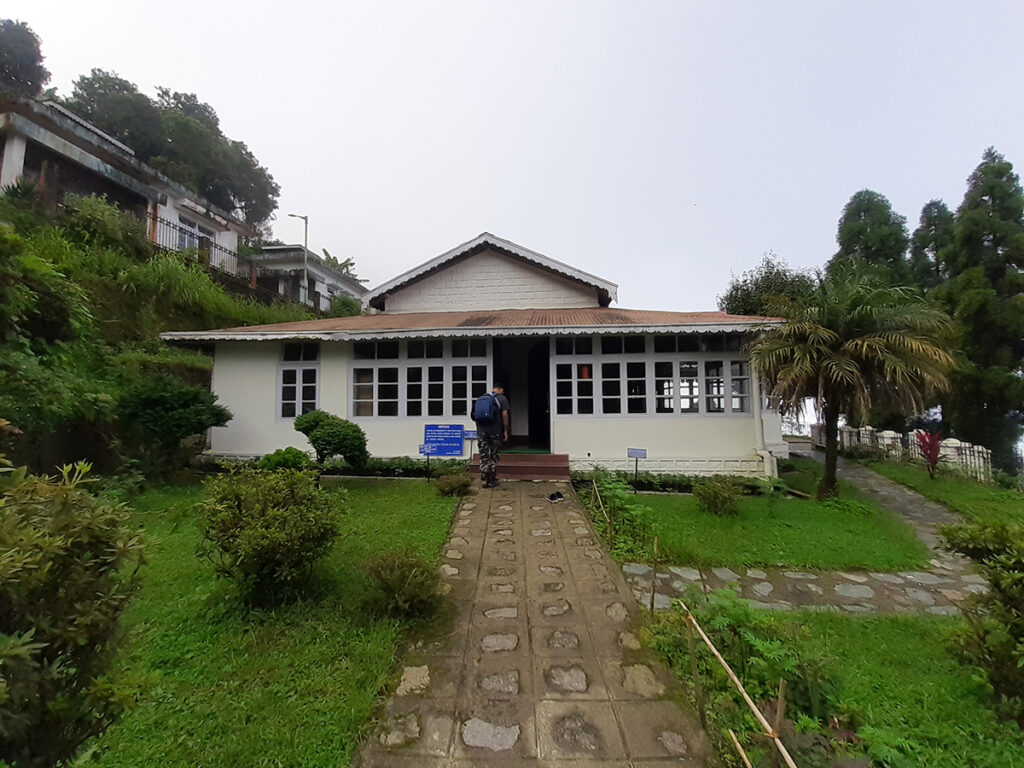
The guest house is at a convenient spot right on the road to Ghum & offers cozy rooms with a balcony view. The lower Himalayas from here appear as good as the valley view from any other hill station in the Himalayas. Meals at the hotel are highly recommended for its taste & warm service. We rested until late afternoon & headed to explore Kurseong township at 4.00 pm. One could ask for a local sightseeing cab at the Hotel reception & pre-book as per convenience. From the guest house our first stop was Gidda Pahar, Netaji Museum in a drive of 15 mins.
The particular landmark is a on a hillock called Gidda Pahar which was enveloped in monsoon mist as we arrived. The views were a challenge though but the museum is an interesting one! Named after Netaji Subhash Chandra Bose who housed this property for months under British arrest in 1937. The 4 room museum provided glimpses of Netaji’s correspondence letters with Pandit Nehru, Rabindranath Tagore & his personal affair with Emile Schenkle. The hand written letters dating back to pre – independence era were like walking into the shoes of these historical figures.
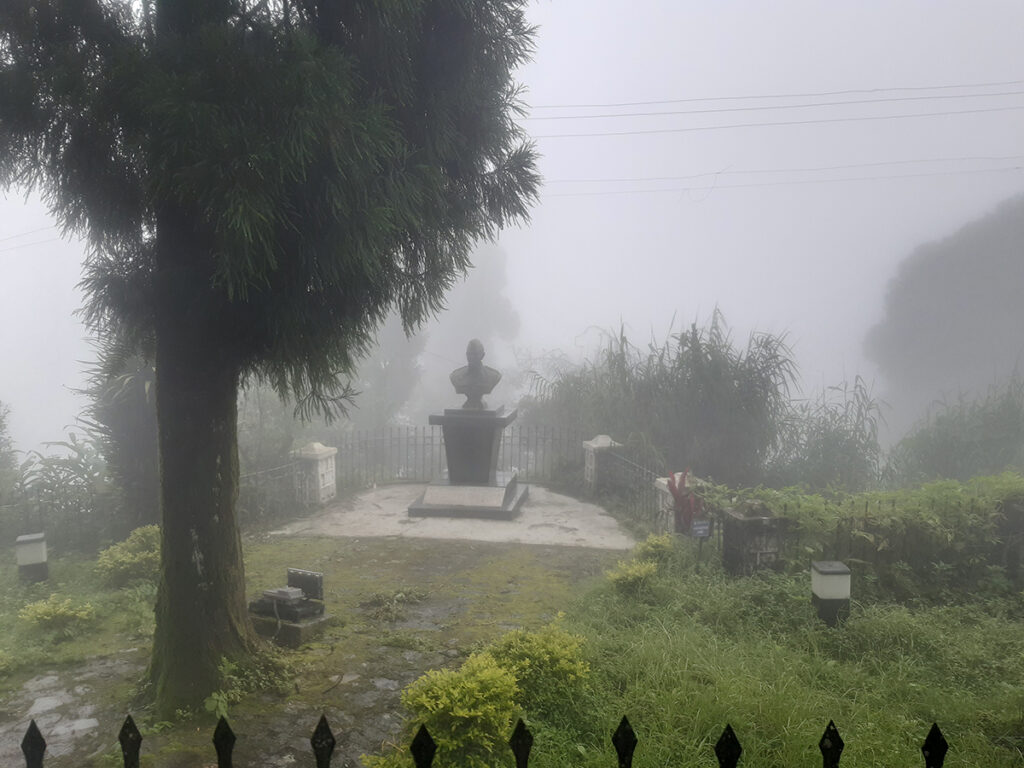
The actual history of this house claims to be the property of Rowley Lascelles Ward, who sold this 100 year old house to Sarat Chandra Bose, Netaji’s brother in 1922. The portraits of Rowley’s & Bose’s family tree are vividly displayed in the museum. With wide verandahs, large glass windows & wooden floor the house is a typical British legacy to India. However, today the house is a heritage spot reminding of the Indian Freedom struggle & a Centre for Studies in Himalayan Language Society & Culture. The keeper of the museum himself seems a product of history, as he asks each visitors “ Namashkar, kahan se aayein hain aap.” (Greetings! Where have you come from?) Well that’s all the voice that echoes up here in complete isolation of Gidda Pahar.
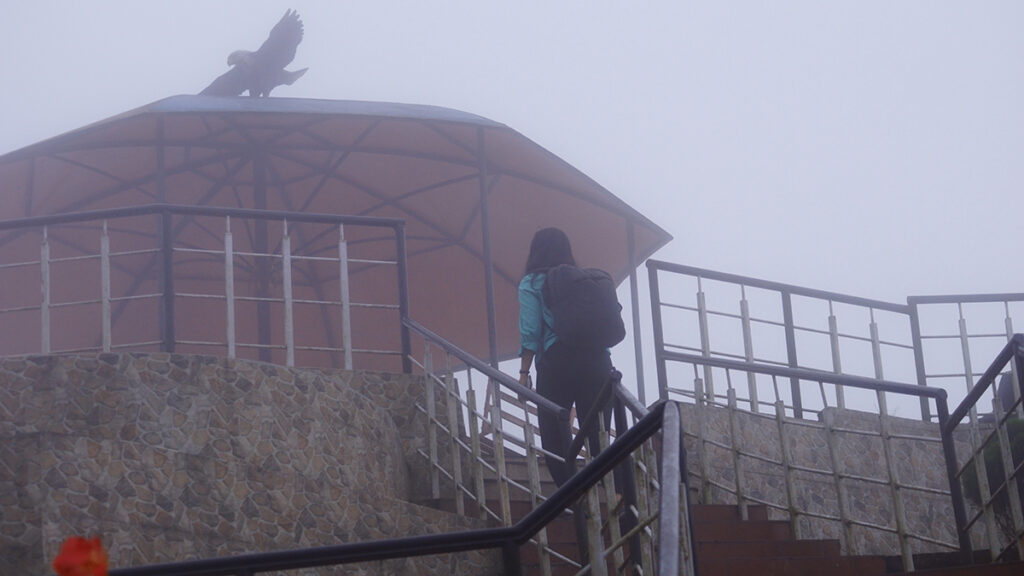
From the museum we drove for about 5 – 8 mins to reach Gidda Pahar View point. Gidda Pahar referring to the eagle mountain is a view point for tourists who wish to catch an eagle’s eye view from Kurseong & below towards Siliguri. Sadly, for us the views were all clouds on our face with flickers of broken mist all around us. That was a bit off for the view point but owing to monsoons we knew what we had subscribed for. We drove further to Saint Pauls, the Apostle Church right opposite our Guest House. The church has an eerie silence around it, with the only sound of the toy train passing by from the tracks laid right outside its premises.

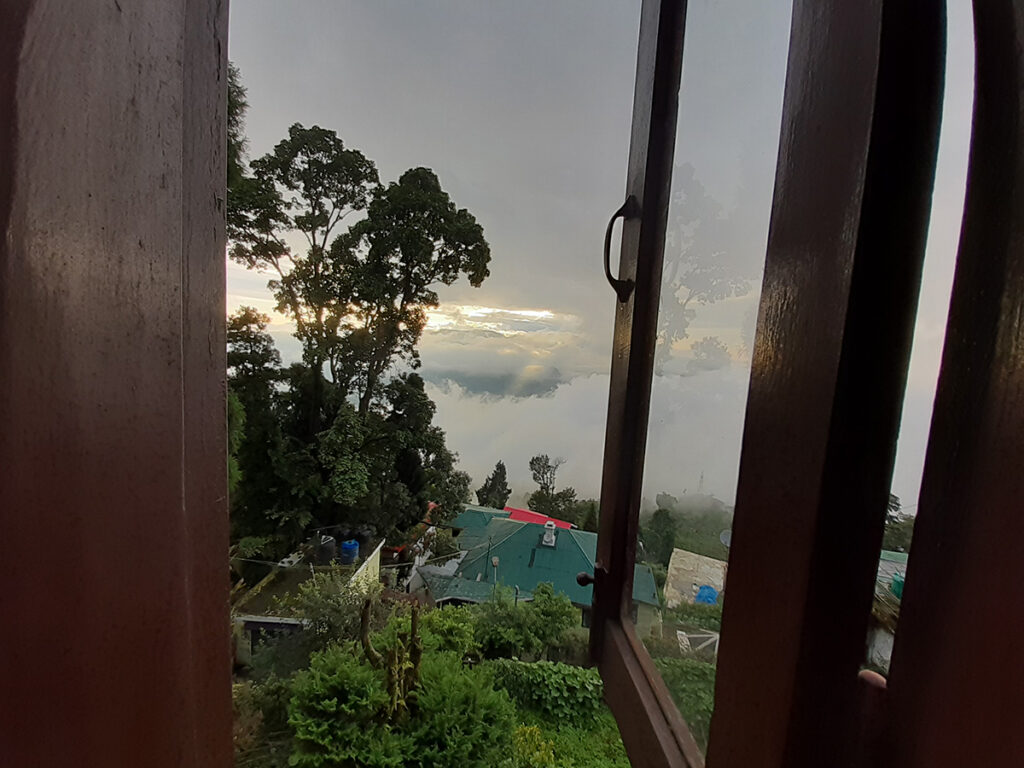
We returned to our guest house for tea & snacks with views of the sunset adorning the Restaurant window. It was a surreal experience to watch layers of clouds throwing sunlight over the layers below, in an ethereal moment with nature. For Sunsets tourists usually flock to Eagle’s Craig, the highest point within Kurseong, where on clear day along with the sunset one could catch a glimpse of mount Kanchenjunga. We however, had other plans to go local in this small town.

Towards evening around 7.00 pm we took a stroll along the township passing by the Kurseong toy train station & the Lepcha inhabitants of this township. The word Kurseong comes from the Lepcha tongue “Carson – rip”, which literately means little white orchids. which adorn this township in spring. While passing by the local vendors we heard some youthful music in the air. We showed ourselves into Cafe Kurseong Diaries, where there was live music & food. What better than getting to hear some live music by the locals of a hill station. The Cafe is a part of Hotel Amarjeet & is a host to some of the finest gastronomical delights presented in a Michelin star standard.
We spent our remaining part of the night until 9.00 pm at Cafe Kurseong. It was boastful of the young Lepcha’s and their incredible musical sense. We walked out of the Cafe at 9.30, as the mountain folks normally retire to bed early and it was time for the Cafe to shut down. With total blackout on the streets & literally four odd locals taking a stroll in the mist, the dogs chasing each other in packs was the takeaway of the night life of Kurseong. Nevertheless, we took our fair share from the township & spent some time by the balcony views of tiny lights fading in the mist. It was time we too hopped on to bed to start early for Darjeeling, the following day .

But before we begin the blog on Day 2, here’s something interesting. I have often heard people calling Mussoorie “Mansuri” & the Mall road, across the Himalayan hill stations, as “Mai- L”. This was all a bit off until I researched why. Like the correct pronunciation of Mussoorie Mansuri, since the word comes from Mansuri shrub, that was in abundance here. Similarly the word “Mall” is a British era legacy given to us across all Himalayan states where the Mall roads served as a division between married accommodation (Married British officers & troops on one side) & on the other are unit admin & living areas. However, in the Eastern belt where the Nepalese populations is in abundance, the pronunciation of Mall road turned out to be Ma- il”. Literally (मेल). Now one could keep arguing that it is different across other states, but ” when in Rome, be like the Romans!” So without much discussion I bought the Eastern pronunciation of Mail for Mall road. More on that, in the blog on Darjeeling. #StayTuned
Images subject to copyright: Samiksha Khanduri & Northern Pinnacles
